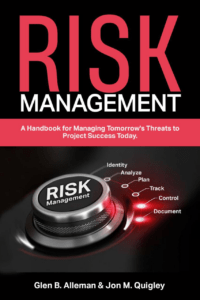Risk Management Strategies in Product Development Projects
Understanding Risk Management in Product Development and Project Management
Jon M. Quigley
Risk management strategies are essential for success in the dynamic world of product development and project management. Whether launching a new product or driving a critical project, the ability to foresee, assess, and mitigate risks can make or break your efforts. As Jon M. Quigley, a recognized expert in project management, highlights, managing uncertainty effectively is a critical skill for project and product leaders.
Why Risk Management is Critical in Product Development
Product development involves juggling innovation, new technology, constraints, timelines, budgets, and customer expectations. Without robust risk management strategies, unforeseen issues can derail even the most well-planned initiatives. Understanding potential pitfalls early allows teams to remain agile and adaptable, from identifying market shifts to anticipating technical challenges. Being nimble (using Agile) and resilient is not the only strategy at our disposal, a measure of planning and selecting prudent strategy given the talent, resources, and constraints is also important.
Quigley emphasizes the importance of integrating risk management into the entire product lifecycle, ensuring that risks are identified at the planning stage and throughout development.
Applying Risk Management Strategies in Project Management
Project management is equally susceptible to risks, whether from resource constraints, unclear requirements, or stakeholder conflicts. Effective risk management strategies enable teams to create contingency plans, establish clear communication channels, and set realistic goals.
As Jon M. Quigley suggests in his works, incorporating lessons learned from past projects is a practical way to improve future outcomes. This reflective approach enhances the team’s ability to confidently navigate complex challenges.
Practical Steps to Implement Risk Management Strategies
- Identify Risks Early: Leverage brainstorming sessions and historical data to uncover potential risks.
- Assess Impact and Probability: Use frameworks like risk matrices to prioritize risks effectively.
- Develop Contingency Plans: Have actionable strategies in place to address high-priority risks.
- Monitor and Adapt: Continuously review risks and adjust plans as projects progress.
- Foster a Risk-Aware Culture: Encourage open dialogue about risks across all levels of the organization.
How Risk Management Drives Innovation and Success
Far from being a barrier, effective risk management strategies foster innovation by allowing teams to take calculated risks. When managing uncertainty proactively, organizations can pursue bold ideas while controlling potential setbacks.
For more information, contact us:
Follow us on social media at:
Amazon Author Central https://www.amazon.com/-/e/B002A56N5E
Follow us on LinkedIn: https://www.linkedin.com/in/jonmquigley/

